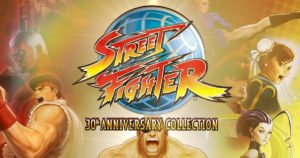
I love fighting games. If I could choose a gaming genre to be left with in a desert island, I would choose fighting in a heartbeat. And among all names and games in the genre, there is one that occupies a special place in my heart: Street Fighter. It’s because Street Fighter was the game that ignited my love for video games in general.
When I was younger (around 6 or 7 years old), I saw kids playing in the arcades in my country (which consisted in a NES or SNES specially modified, to appear like an Arcade unit as seen in the US). At the time, I could not understand what they saw in video games. I preferred to watch cartoons or to play with my friends. One day after school, a friend of mine invited me to an arcade. At first, I didn’t want to go, but after his insistence, I broke down and went with him. Oddly enough, he only had a couple of 50 cent coins–enough to play a couple of minutes. We went to play a game that had some karate guys, one in a white gi another in a red one, a green monster like dude, a sumo practitioner, a cute girl, a huge wrestler, a stretchy dude, and a soldier. After playing with the red gi dude against the wrestler and winning twice, we ran out of coins and went home, but my heart was racing. There was a feeling of joy and excitement that I never felt before. That game ignited a flame that 26 years later burns brighter than ever. It ignited my love for video games. That game that I just described was Street Fighter 2 World Warrior.
Fast Forward 30 years and several installments in the series (some that I absolutely love), we have here one of the most complete collections so far. With the 30th Anniversary Collection, you get arcade-perfect iterations of not one but 12 games in the Street Fighter series, complete with tons of art work, making of, and cool information that even I as a fan was not aware of. So let’s take a trip through Street Fighter’s fascinating story…

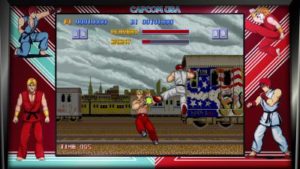
STREET FIGHTER: The game that started it all.
The original Street Fighter released in 1987 was a game that I did not had the chance to play until recently. The premise is simple: participate in a series of battles, against ten opponents from five different nations. While I was playing, I saw familiar faces like Gen, Adon, Eagle, Birdie and Sagat, so it’s nice to see where those characters met on subsequent sequels and spinoffs come from. There are also others that I never knew they existed like Geki, Retsu, Joe, Mike, and Lee. Even to this day, the game has aged well. The graphics look good, and the music is not so bad (hysterically, I laughed when winning and losing, since all characters say the same thing in the same robotic voice).
I can say that this game is hard, even if you have three secret techniques (that at the time of release were not included in the cabinet–players had to figure them out), it’s hard to pull them off. This is so even more when the AI character is pounding you with their skills. Even so, I did enjoy it. The VS mode is just Ryu against Ken only, so there is not many characters to choose from like the sequels. One fun fact is that there were two versions of this game. One had two buttons that functioned as pressure pads and worked as hard as you hit them, that would be the type of attack. However, Capcom changed it to the 6 button layout (maybe the pads broke down easily) that is a standard to this day.

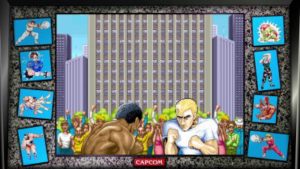
STREET FIGHTER II WORLD WARRIOR, CHAMPION EDITION, TURBO
This is now one of my favorites in the series World Warrior. Capcom knocked it out of the park with this one. Not only did the 16 bit graphics look great (and still do), it had more characters to choose from. Special attacks weren’t secret anymore and were easier to do, but also, it set the base for the combo system as we know it today (it was found by mistake, by the way). I really love World Warrior, as I mentioned previously, but there’s also some special nostalgia there for me. Some of my friends on Saturdays had sleepovers, and we played SFWW on SNES all night long. We had challenges like beating the game in hardest difficulty without losing a round and with X character, or who could clear it faster and so forth. Needless to say SFWW plays and feels just like I remember from my childhood.
Then Champion Edition came, and became the new favorite, mainly for the changes it brought. You were able to use the four bosses, and characters had a more serious, fierce look (if you look at character portraits in WW and CE in WW, they look younger). From my perspective, nothing changed much from WW to CE, aside for the aforementioned changes, but I still enjoy playing it, even more with some snacks and self imposed challenges, like I did in WW.
Then came Turbo. Now this is where things got interesting. Like the name implies, Street Fighter 2 Turbo Hyper Fighting was a faster game than Champion Edition. Every action was faster so specials and attacks had to be more precise timing wise. But the speed also allowed for faster fights and more flashy combos, even more chaotic with all speed setting on consoles. I was so rusty during this review that got my butt handed to me by the CPU all the time.
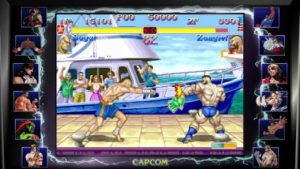
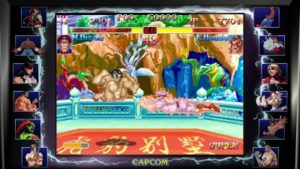
SUPER STREET FIGHTER II THE NEW CHALLENGERS, SUPER STREET FIGHTER II TURBO: A new era a new Street Fighter
SSF2: TNC( Super Street Fighter 2 The New Challengers) received new characters, changes to overall game, and character portraits (compared to previous versions, they look amazing). But it also introduced a new scoring system that kept track of the amount of hits in each combo, reversals, and recoveries. You are now able to see how many hits your hard practiced combos did, unlike previous games that the only indicator of a combo was how fast the health gauge depleted. Also, this game introduced fan favorites: Fei Long( Bruce Lee) Cammy, DeeJay, and T-Hawk, each with their different endings and reasons to participate on the tournament. For me SSF2:TNC is one of the most complete games in the collection, even though is not as fast as Turbo, since the speed was reduced like CE. Once you play this one, it’s hard to go back to the originals, but I must commend Capcom, since all games mentioned so far in this review set up the basis for upcoming games.
SSF2 Turbo( Super Street Fighter II Turbo) is the pinnacle of SF2 releases. Not only did it bring back the speed seen in Hyper Fighting, but it also included something that became a staple on fighting games since: the Super Combo, a more powerful multi hit version of each character’s special move. This game included the ability to juggle characters in the air (some specials have this property), and you can combo into another special or super combo. The roster is equal to SSF2: TNC, except for secret character Akuma, since then Akuma has been a regular on the series. The game play feels like SSF2: TNC with combo counter and mechanics introduced before turbo. So far, this is the game closest to modern iterations of SF, and even to this day, it is still played competitively. It is a great game, and one of the four along with Hyper Fighting that can be played online.

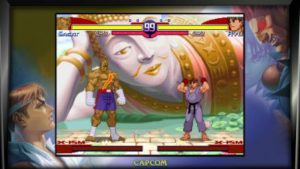
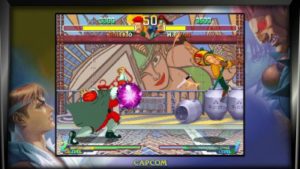
Alpha Series and Street Fighter 3
Capcom decided that SF needed a breath of fresh air, so they developed the Alpha series. Canonically, the Alpha series is set before the events of SF2, and Capcom decided to go with a different art style, as opposed to previous games that had a more lifelike appearance. In Alpha, they have an anime-oriented style, giving characters a really clean, aesthetic, and flashy effects on special attacks and super combos. The Alpha series spawned three games included in this collection: Alpha Warriors Dreams, Alpha 2, and my all time favorite Alpha 3. Each game is completely different from each other, but with some consistencies that define the series as a whole. Alpha WD (Warriors Dreams) is the first in the series that introduced a three level super gauge, multiple super combos for each character, a chain combo system (allowing linking weak, medium, and fierce attacks), defensive options like alpha counter, a technique that allows you to interrupt your opponent’s attack dealing damage via a counter, using a part of your gauge, air blocking, throw recovery, and ground roll. Alpha also included two secret characters, Akuma as a hidden boss, and Dan the Man (my favorite character). While the roster is not that big in comparison with previous games, the inclusion of Final Fight characters Guy and Sodom is a welcome addition.
Alpha 2 brought back elements introduced on original Alpha like three level super gauge, air block, roll, throw tech, and alpha counters, but it includes something new. Speaking of alpha counters, each character has two as opposed to previous game that only had one. Also, Alpha 2 removes the chain combo system but introduces the Custom Combo. CC uses gauge and a timer starts to run down above the super gauge. During that time, you can link normal and special attacks until the timer runs out. Noticeably, Guy and Gen are the only characters that still have chain combos albeit in a limited way. The roster is bigger than previous game. Dan, Akuma, and Bison are selectable characters, along with newcomers Sakura, Dhalsim, Zangief, Gen, and Rolento. Personally comparing Alpha 1 with 2, I like this version best, the custom combos are good ways to dish out damage while super combos do more damage as opposed to previous game (also, you can play as Evil Ryu via code).
Alpha 3 is my absolute favorite in the series (I like it even more than SF2WW and SF3). It boasted more super combos for each character, a kick ass soundtrack, a revamped history, and three ISM to fit your gameplay style. A-ISM is the normal three level super combo that we came to love, alpha counters, and such, but with a huge difference. In previous games, to do a level three super combo, you had to press al three punch or kick buttons. Here, depending on the button pressed, that is the level of the super combo, fierce level three, medium level two, and so forth. X-ISM changes the formula. You don’t have air blocking anymore and can only do one super combo, but the trade off is that your attacks are stronger. Some normals and specials have variations as opposed to other modes (example: Adon’s Jaguar Kick in X-ISM can be done by simply pressing any kick button while airborne), and the super combo does insane damage. So for those of you who like to rush down opponents, the X-ISM is right for you. V-ISM is a gauge for those of you that love custom combos. When the gauge is at least 50 percent, you can activate it. The difference with previous game custom combo is that you have complete control of your character (in alpha 2 activating CC the character moved forward automatically) also a shadow mimics everything you do( for example if you throw a hadoken two will come out), which gives the possibility to combos with a high amount of hits, albeit sacrificing attack power.
This Alpha 3 version is an arcade perfect port, meaning that characters like Evil Ryu, Guile, Eagle, Jun, Maki, DeeJay, Feilong, Shin Akuma, and Ingrid are not included. This is one of the things that do not make sense to me. I get that the ports are arcade perfect, but why not the Alpha 3 Upper that was re-released on 2001 on arcades? I am disappointed by this decision. Even the GBA got the Upper Version, but in any casem it has online functionality for which I can forgive Capcom (maybe the Upper version can be added in a patch–a guy can dream).
And last but not least Street Fighter 3! I remember that there was a ongoing joke during the days that it was released that “we may never see a Street Fighter 3” due to the trend that Capcom had of re-releasing an upgrader version of Street Fighter 2 (I read that in a Gamepro magazine, I believe), but Capcom decided to shut some mouths and released one of the most technical game so far: Street Fighter III New Generation.
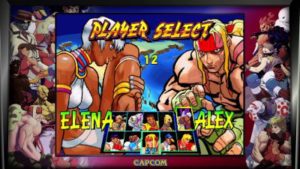
In SF3NG, Capcom did a complete overhaul, not only in graphics (that even to this day SF3 is amazing to look at) but also in the battle system. Tt was taken in a completely new direction, adding features like parry. A parry is a defensive-offensive tool that can turn the tables and give you the chance to counter attack. Parrying is done by pressing forward or down just as soon as you are going to receive an attack, leaving the opponent vulnerable to counter attack, while minimizing the amount of damage you would receive as opposed to blocking. You can dash or retreat (now a staple in modern games) to get close or far from danger, which is a small jumping attack to punish crouching opponents,. And as before in the Alpha series, you cannot block mid air (but with the parry, you can parry some attacks mid air). Super combos are called super arts. After selecting your character, you can choose one from three different arts. Each character has, depending on the super art chosen, the gauge that can allow for multiple uses of the art or length of the gauge. In the roster part, Capcom went for quality above quantity. The roster is only ten characters (twelve, if you count the Yang head swap, but the move set is the same, and Gill, the unusable boss).
Street Fighter III: Second Impact brought back all characters seen in the previous one, including newcomers Hugo and fan favorite Urien. Yung and Yang have different character slots, specials, and super arts to differentiate one another. Also, Akuma returns as a hidden selectable character, increasing the character roster to 14. In the second impact, the addition on EX Specials (more powerful versions of each character’s special attacks, albeit using a portion of the gauge), tech throw( the ability to escape a throw), and personal action (a taunt like seen in Alpha series, but the difference is that it gets benefits for example Ryu’s lowers his stun gauge). I like this version a little more than 3rd strike, since Sean’s attacks are so much better here in Second Impact. It feels like a strong character on the 3rd Strike feels like they tried to make it the Dan of SF3.
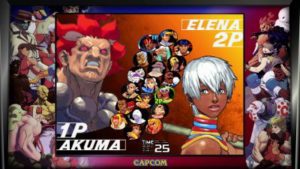
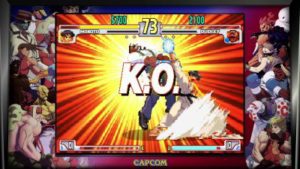
Street Fighter III: Third Strike-Fight for the Future
This is the main course of the collection. Why? You might ask. If you are not familiar with Evo moment 37, Google it snfbask in all that hype and glory. Then, come back and continue reading.
This is the last installment of the SF3 series, and this is by far the pinnacle of SF3 goodness. All previous characters return, plus newcomers Makoto, Remy, Q ,and Twelve. Also, everyone’s favorite gal Chun-Li returns to the series since the original SF2. Several changes were made to attacks and animations. Commands for air parries, leap attacks, and throws were changed as well. There is a new type of parry called “red parry.” It’s really hard to pull off, but it can lead to devastating counter attack options. Even to this day, Third Strike occupies a special place in the hearts of professional players around the world. But by itself, it is often criticized due to the complexity of its gameplay elements (this is for the SF3 series as a whole), namely the parry. Often the game is considered to cater to professional players instead of casual level gamers (I love it and can hold my own in a fight, but even to this day I cannot parry like the pros).
Now that I gave a LONG description of all games in the collection, (sorry I got a little carried away) let’s talk about the extras that are included. The museum is a compendium of facts, history, and artwork from each game starting with the original Street Fighter all the way to this collection. Each game is represented by a date, be it release on arcade or home consoles. It includes concept art fun facts and even cameo appearances by some characters in other games. There is a lot of information here, even facts like the Street Fighter Alpha 3 Saikyo Dojo version. So, for the fan like me, there is a lot to do. It also features character bios, sprite samples of attacks, and special attacks of each character. There is also music sampler in which you can rock to all those upbeat and awesome tunes the SF series is known for.
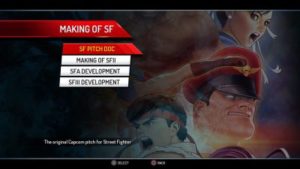
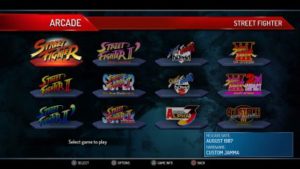
![]()
Performance wise, the Nintendo Switch version is optimized to make use of all its power. I like that I can activate filters like Arcade or Home versions (I’m in love with the scanlines effect) and have the image stretched to full screen original or bigger picture. And you can choose if you want to use a border on each series or not. Also, I like the fact that you can configure the button layout ( R and ZR for Fierce punch and fierce kick, all the way).
So far, the collection is superb except for a couple of things (at the time of review, I think they can be addressed in a update). First is the music and effects volume overall. While I like to game on the TV, most of the time I play in handheld mode, and even with the volume at maximum, I can barely hear what is happening on screen. This is extremely annoying, particularly when playing Alpha 3 (another thing that I dislike, I wanted Upper at least). I love the Alpha 3 because the music is amazing, specially Bison’s end boss theme. So far for me, it’s the best boss theme in fighting games. For comparison, I dusted off my PSP and put the Alpha 3 Max game. At full volume, the PSP drowned the Switch. I could even hear it outside of my room, and the Switch not even with headphones. At first, I thought it was the speakers on the Switch, but I changed to another game in my library and full volume like nothing happened, and there is no option to increase the volume level of music and effects. The options are only there to configure player one and two buttons, and that’s it. On TV mode, if I increase the volume on my TV all the way to 90, I can hear better, but the fact that the volume is so low even on TV mode is something unacceptable for me. The Switch version includes a exclusive mode, The Tournament Battle Mode, recreating 8 player tournament mode of arcades of old, but with that weak volume level, you won’t hear anything (especially if the players are loud). I hope that Capcom can come with a patch that fixes this problem and add more options to the game itself.
The Training and Versus modes are included so you can practice your combos, and duke it out with another player. You can play with joycons in two player mode (like the SNES days), but in my opinion, if you can invest in pro controllers, do it. Playing with joycons, even on portable mode, is an exercise of frustration. The already terrible joycon directional buttons shine here, but not in a good way. If I play Ultra SF2 with the directional buttons, I can do everything, from simple shoryukens, to super combos (even Zangief Final atomic buster), but in the collection, I cannot do anything. And if I play using the left stick, trying to combo a medium kick into a super art (or combo in Alpha 3) is near impossible. I just don’t get it. How could they do a terrific job on USF2 with that terrible directional buttons, just to take two steps backwards? Here in the collection in which combos and quick reflexes can mean a victory, and failed attempts are a secure loss. I hope that this will be solved with a patch because playing with the joycons is a big no (for reference, used brand new joycons out of the box and the result was the same) with a pro controller and with a proper D-pad, I’m in heaven.
About Online for the 4 titles that have it, I feel that Capcom did a good job with the netcode. The little that I was able to play (only reviewers and select few online), it was fluid and almost to no lag at all. I was able to find matches in Alpha 3, 3rd Strike, and SSF2 Turbo. I can only imagine all the online goodness with the rest of the world.
Bottom Line: Street Fighter 30th Anniversary Collection is the most complete compendium to date. Not only does it include the games that set a before and after in fighting game history, but it also includes tons of artwork, making of, and tips and trivia of one of the most influential series in history. I absolutely recommend it to fans and newcomers alike. I made one of my wildest dreams come true playing Alpha 3 online, and having SSF2 Turbo, and SF3 on a Nintendo console again feels right. To me it’s pretty much perfect, and the issues that I personally had are not game breaking and could be easily solved with a patch. But in the meantime, I’ll continue this trip with my trusty companions Ryu and Ken. Here’s hoping for 30 more years!

